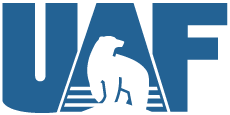
Curry Cunningham
Associate Professor
Commercial Fisheries
Fisheries Ecology
Fisheries Management
Fisheries Population and Biometry
College of Fisheries and Ocean Sciences
17101 Point Lena Loop Road
Juneau, AK 99801
907-796-5457
cjcunningham@alaska.edu
- Andrew Dimond
- Rachel Ertz
- Elena Eberhardt
- Tanner Kohal
- Kevin Siwicke (PhD)
- Blake Toney
Lab post-masters
- Joshua Zahner
PUBLICATIONS LIST HERE
- Population dynamics
- Bayesian methods in ecology and fisheries management
- Stock assessment
- Management Strategy Evaluation
- Ecological and fisheries forecasting
My interest in fisheries management began at age 13 during my first season commercial salmon fishing in Bristol Bay, Alaska. Throughout subsequent seasons as a set and driftnet fisherman my curiosity about the complexities of the salmon management process was ignited. Later my passion for quantitative ecology was sparked by an undergraduate course taught by Dr. Carl Walters (University of British Columbia), during which I became enamored by the idea that one could attempt to explain the chaotic dynamics of natural systems mathematically by confronting models with data. This excitement has guided my subsequent career and research in population dynamics and fisheries management.
I am a quantitative ecologist with a propensity for fisheries problems. I utilize applied statistics and simulation modeling to address interesting questions about fisheries management, evolution, predator-prey interactions, and the population dynamics of aquatic species. My research generally falls in two categories: (1) applied research to enhance sustainable management of commercially harvested species, including methods for improving stock assessment and survey design through Management Strategy Evaluation, and developing statistical tools for forecasting salmon abundance, and (2) basic research to improve understanding of the ecological and evolutionary processes that shape the natural world, with projects focusing on bear and salmon predator-prey dynamics and the evolutionary implications of natural and anthropogenic selection on fish and wildlife.


